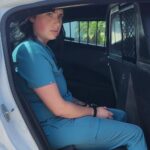Just because a person lives in the house does not mean he is an insured under the Homeowners’ (HO) or Personal Auto Policy (PAP). Nor does an individual necessarily have to live in the household to be insured on either the HO or PAP.
So, in general terms, who does qualify as insureds in the HO and PAP? Following is a quick overview of the various paraphrased definitions of “Insured” found in standard ISO HO and PAP forms.
Homeowners Policy:
“You” (policy-wide term): Named Insured and Spouse if resident of the same household.
Automatic Insureds by Residency: Resident Relatives; resident non-relatives under the age of 21 in the care of a “You” or a resident relative; a student enrolled in school on a full time basis who was a resident before moving out to attend school (to qualify, the student must be: under the age of 24 if a relative, or under 21 if not a relative and in the care of “You” or a resident relative).
Automatic Insureds by Exposure: For liability coverage, any person or entity held legally responsible for animals or watercraft which are owned by a “You” or automatic insured by residency – provided the care and maintenance of animals or watercraft is not the caregiver’s business.
Automatic Insureds – “motor vehicles”: For a covered “motor vehicle,” insured status is extended to: Persons employed by a “You” or a resident relative for use of the vehicle; others using a “motor vehicle” on an “insured location” with your permission.
Personal Auto Policy
Personal Auto Polices have four distinct coverage parts; three liability parts and one physical damage part. Each extends different coverage to the insured person or entity. The person(s) insured and how coverage applies within each coverage part follow:
“You” (policy-wide term): Named Insured and Spouse if resident of the same household and for up to 90 days after common residency ceases.
“You” and “Family Members”:
- Liability Coverage (Part A): Ownership, maintenance or use of ANY auto or trailer (with some exclusions)
- Medical Payments Coverage (Part B): While “occupying” a motor vehicle designed for use on public roads or when struck as a pedestrian by such a vehicle.
- Uninsured/Underinsured Motorist Coverage (Part C): For compensatory damages (bodily injury or property damage) “You” or family members are entitled to recover from the owner or operator of an uninsured or underinsured motor vehicle.
Automatic Insureds:
- Liability Coverage (Part A): Any person using “your covered auto” with permission; any person or organization legally responsible for the actions of an insured resulting from the use of a covered auto or trailer; includes vehicles not owned by the insured (or provided for the insured’s regular use) or the organization.
- Medical Payments Coverage (Part B): Any person while “occupying” “your covered auto.”
- Uninsured/Underinsured Motorist Coverage (Part C): Compensatory damages to any other person “occupying” a covered auto. • Consequential damages suffered by a third party due to injury to any insured person.
Physical Damage Coverage (Part D): Physical damage coverage (collision and other-than-collision) attaches to a vehicle that qualifies as a “Your Covered Auto” rather than an individual or entity.
Upcoming In-Depth Review
On Thursday, July 21, the Academy of Insurance sponsors a session that details insured status in the HO and PAP policies – including a deeper review of many of these definitions such as:
- How many degrees of separation are allowed for a “resident relative?
- What creates “residency?”
- What makes a student a “full time” student?
The answers make a big difference in coverage. Your clients may have people in (or out of) their homes you and they think are insured but who really aren’t.
Register today for this session. Your “insureds” will be glad you did.
Topics Auto Personal Auto Homeowners
Was this article valuable?
Here are more articles you may enjoy.



 Rethinking Assault & Battery Liability in Commercial Real Estate
Rethinking Assault & Battery Liability in Commercial Real Estate  Parrish Named CEO of Howden US, Is Sued by Former Employer Marsh
Parrish Named CEO of Howden US, Is Sued by Former Employer Marsh  Florida Woman Posed as Nurse and Treated Thousands of Patients, Officials Say
Florida Woman Posed as Nurse and Treated Thousands of Patients, Officials Say  Columbia University Hack Affected 870,000 People, Included Some Health Data
Columbia University Hack Affected 870,000 People, Included Some Health Data 


